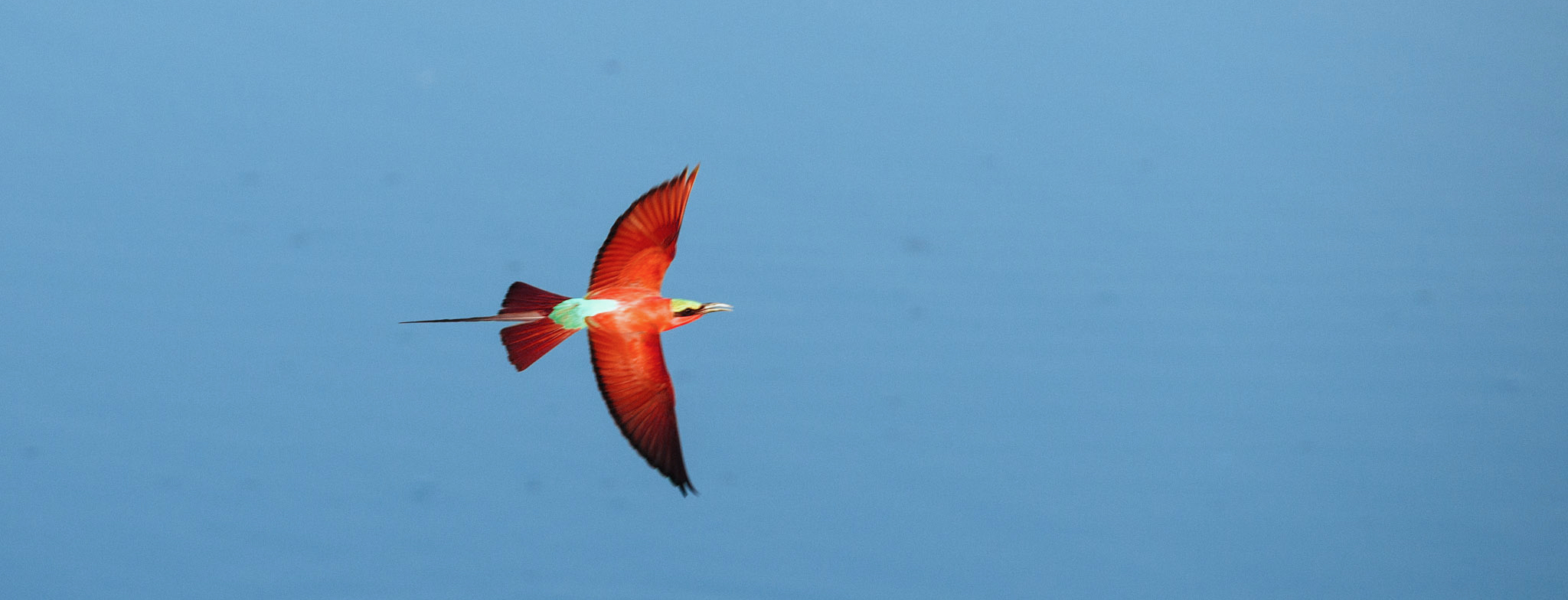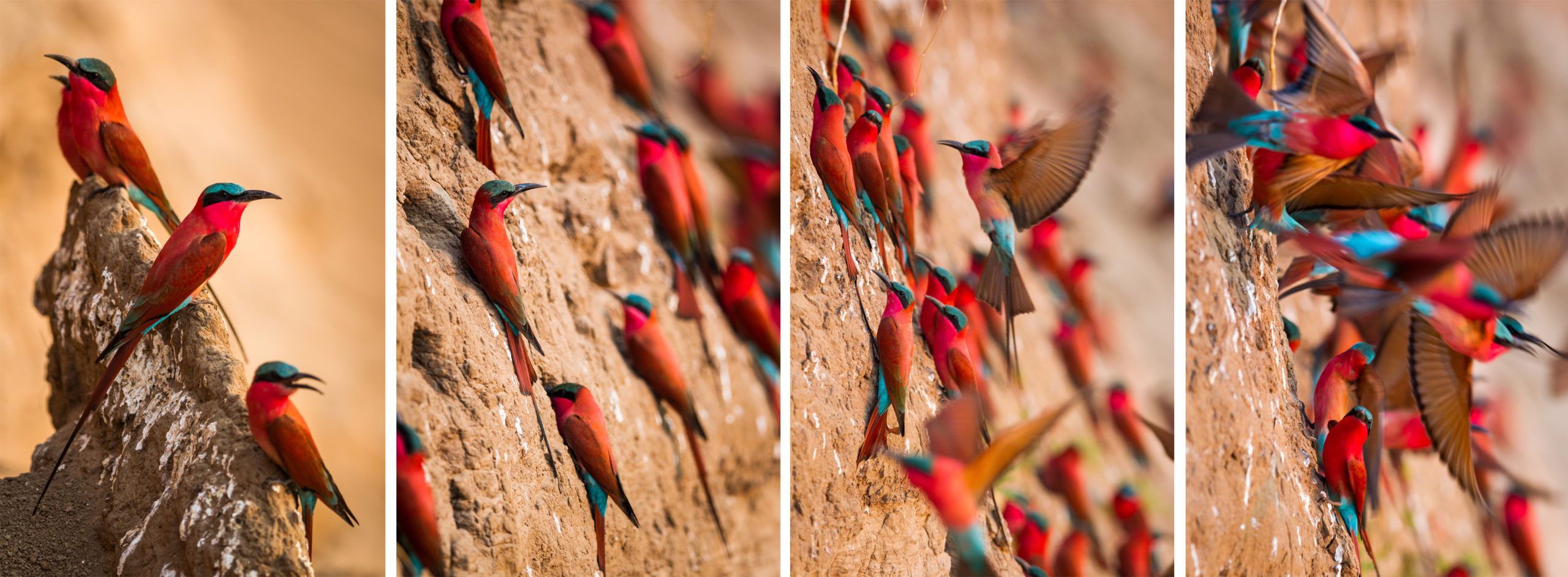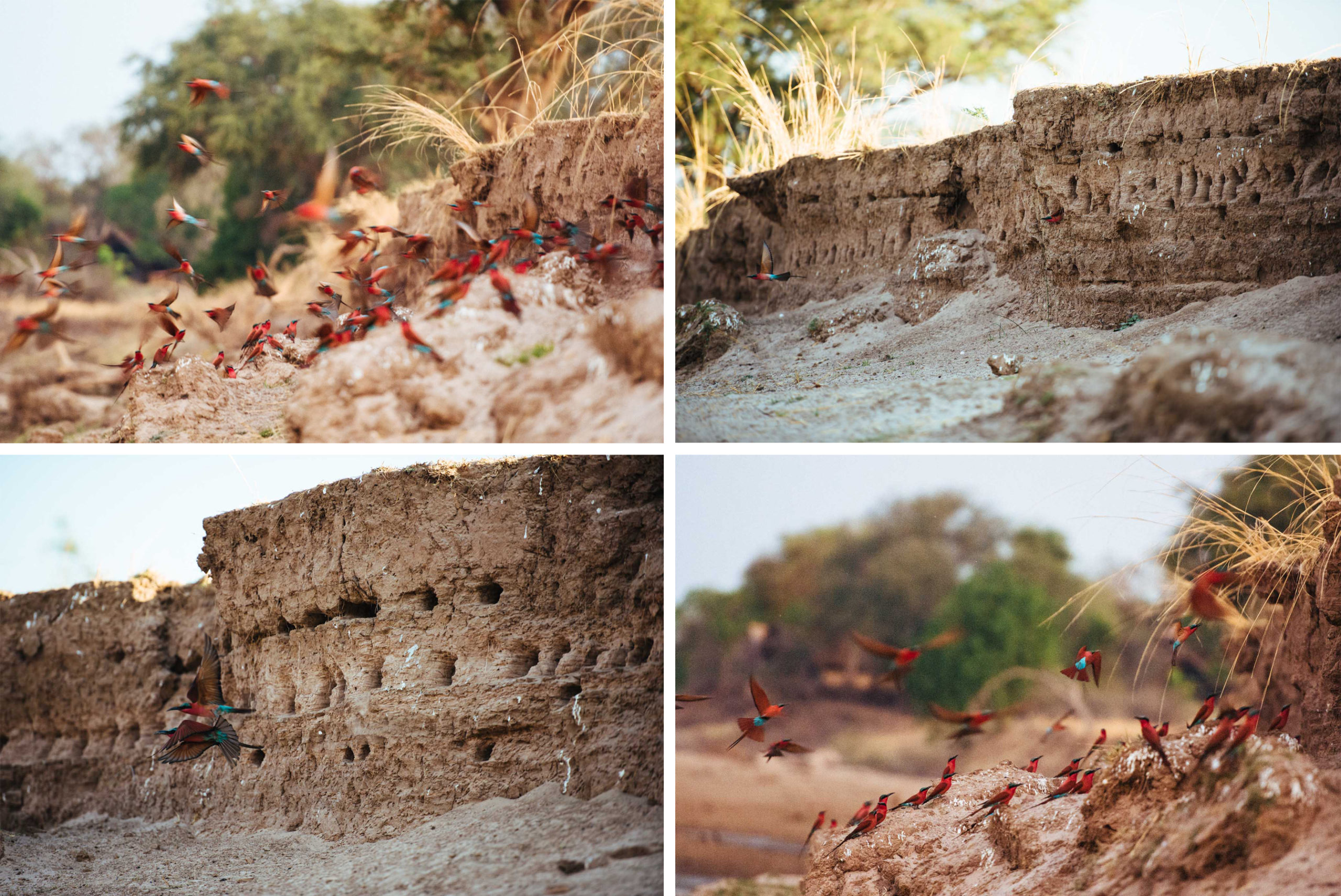Travel along the banks of the Luangwa River and you won’t need to do too much searching before you come across the beautifully coloured carmine bee-eater colonies. Carmine colonies make their presence known with their vibrant colours and loud chirping, which can be heard for more than a kilometre away. There’s so much more to observe and learn about these magnificent birds…

Here are seven amazing facts about the carmine bee-eaters:
- They are masters of ‘hawking’, a hunting technique where birds launch from a perch, catch an insect from mid-air and return to the same or a different perch. Carmine bee-eaters have even been known to use the backs of antelopes or kori bustards as roving perches.
- They build burrows one to two metres deep into dry riverbanks. A whole colony will occupy the same stretch, making for dramatic displays as they come and go from their burrows.
- They are drawn to bush fires and will circle high above the flames, catching the insects that are flushed out of the burning undergrowth.

- Just like the great wildebeest migration, the southern carmine bee-eaters follow a yearly migration route— from August to November they reside in Zambia, Zimbabwe and Botswana. During the summer months, they fly to their southernmost habitats in South Africa, before eventually returning north to the lush rainforests of equatorial Africa from March to August.
- Their favourite foods are bees, termites, cicadas, dragonflies, butterflies and locusts. They will regurgitate pellets containing the indigestible chitinous parts of the insects.

- When hunting bees, they will return to their perch and smash the bees into the branch, rubbing the abdomen to remove the venomous sting before eating the bee.
- During the breeding season, the females will eat snail shells, sand and other calcium-rich items to help produce stronger eggs.

Writer: Kelsea Lee
Photography: Time + Tide



Leave A Comment